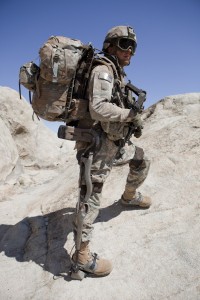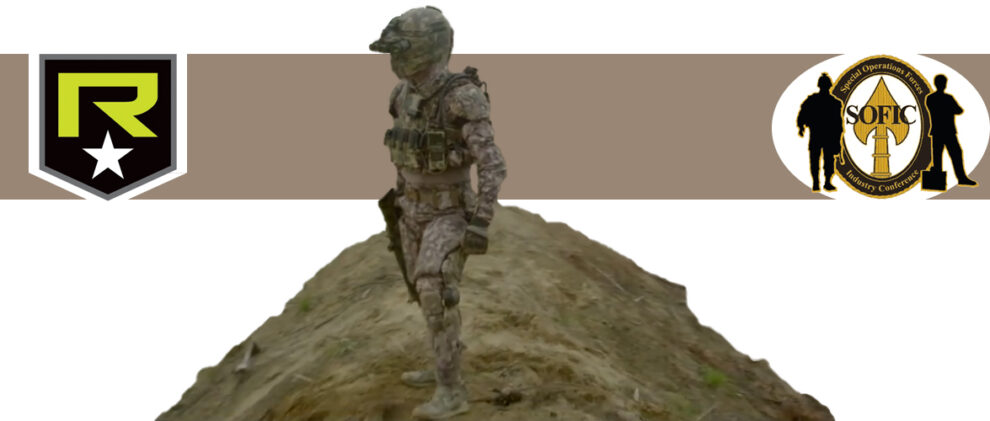The Revision Military Kinetic Operations Suit managed to garnish a good deal of media attention at the SOFIC 2015 military conference in Tampa Florida. SOFIC or Special Operations Forces Industry Conference is an opportunity for academia and industry to showcase their latest military-related work. SOFIC provides an open dialog between USSOCOM (United State Special Operations Command) generals and acquisition executives and the presenters. In 2014, SOFIC attracted over 340 different companies from the fields of chemistry to robotics. In order to understand what makes up the Kinetic Operations Suit let’s look at the company behind it and their prior work first.
What is Revision Military?
Originally founded in 2001 as Revision Eyewear in Canada as a sports visor company, Revision Military is now headquartered in Vermont, USA and specializes heavily in military technology. Starting from their roots in performance eyewear, Revision Military has expanded their portfolio to include face, head, torso and now full body protection. The company specializes exclusively in soldier protective gear, performance enhancement systems and their integration with ballistic eyewear being the top selling item. The Revision Military Kinetic Operations Suit is an agglomeration of the company’s products, bound together by a powered exoskeleton.
Past exoskeleton work by Revision.
Revision Military does not appear to have significant prior robotics experience. The company also doesn’t have any published robotic patents or patent applications. This could mean one of three things: First, Revision Military has been able to put together an internal robotics team that has produced a prototype powered exoskeleton for the SOFIC 2015. Second, Revision Military has subcontracted the exoskeleton design to another company, however, the device does not closely resemble any published power suits. Third, it could be that the exoskeleton shown at SOFIC 2015 is scaled down with minimum power assistance and Revision Military are just using it to introduce a concept (see addendum). In Feb 2014, Revision Military acquired Panacis, a Canadian company focusing on Lithium-ion rechargeable energy storage systems. Revision Military did demonstrate a knee and hip exoskeleton at SOFIC 2014, PROWER Human Augmentation System (HAS), see the video below posted on Youtube and created by defensereview.com:
The PROWER featured at SOFIC 2014 was a partial exoskeleton with motorized knees only. The exoskeleton appears to be torque controlled. As a soldier’s knee starts to extend, it would slightly spin the integrated motor and its associated encoder which, depending on its sensitivity, could send a signal for the knee motor to activate within milliseconds. The stated battery life of the device in mountainous terrain does seem a bit exaggerated or perhaps the 2014 acquisition of Panacis might have really paid off for Revision Military.
The Revision Military Kinetic Operations Suit
While the Kinetic Operations Suit made the headlines at SOFIC 2015 in May, Revision Military released a phenomenal video highlighting their armored package in January. The Kinetic Operations Suit appears to have preserved all of the original components of the PROWER from 2014. The battery and cables are now better secured and the waist line strap appears a bit larger. A new feature of the Kinetic Operations Suit is a flexible mechanical spine that runs from the exoskeleton assembly all the way to the helmet. This flexible mechanism allows for part of the weight of the helmet and the upper body armor be transferred from the neck and spine directly to the exoskeleton, which then distributes the load between the hips and the legs. Potentially, future models could have a full lower extremities exoskeleton and the weight be redirected directly into the ground. The suit also comes with a coil of tubing that acts as a liquid cooling system.
The Revision Military Kinetic Operations Suit combines all of the company’s products under one coherent package: helmets, armor, integrated electronic devices and power assist exoskeleton. Reportedly, the power suit offers enough protection to defend as much as 60% of the user from rifle rounds. The Kinetic Operations Suit was designed with the requirements of the SOCOM TALOS (Tactical Assault Light Operator Suit) initiative in mind and Revision Military could qualify for funding.
Terminated projects, HULC and lessons learned.

Revision Military joins the ranks of only three other entities actively developing military exoskeletons, the French RB3D, the Russian ExoAthlet and the Chinese government which introduced their exoskeleton at the 2014 Zhuhai Airshow. The main problem with military exoskeletons is that they have to work with fit able-bodied soldiers, survive extremely high stress and strain in adverse conditions (sand, water) and have enough power to do so for at least a full day. Two of the biggest names in exoskeleton technology, Lockheed Martin and Ekso Bionics attempted such a device in 2008 called the HULC (Human Universal Load Carrier). Ultimately, the exoskeleton was tested in August 2011 by U.S. Army researchers at the Natick Soldier Research, Development, and Engineering Center in Natick, Massachusetts. The suit proved to be impossible to power for long durations of time, had poor integration with military electronic equipment, the combine weight of the exoskeleton and batteries was too high and the suit was deemed useless in a firefight. The military concluded that it would be significantly cheaper to air drop supplies into dismounted soldier combat zones rather than transport them with exoskeleton enabled foot soldiers. Revision Military appear to have learned from all of the shortcomings of the HULC project. The Kinetic Operations Suit uses electrical motors rather than the bulky hydraulic actuators, has more modest power assist expectations which requires less power supplied with newer battery technology and the suit is fully integrated with all mechanical and electronic components into one complete package.
Addendum (June 3rd, 2015)
The Revision Military powered exoskeleton is developed by the Canadian human augmentation systems company B-TEMIA Inc. Visit their website, b-temia.com for more information.








1 Comment